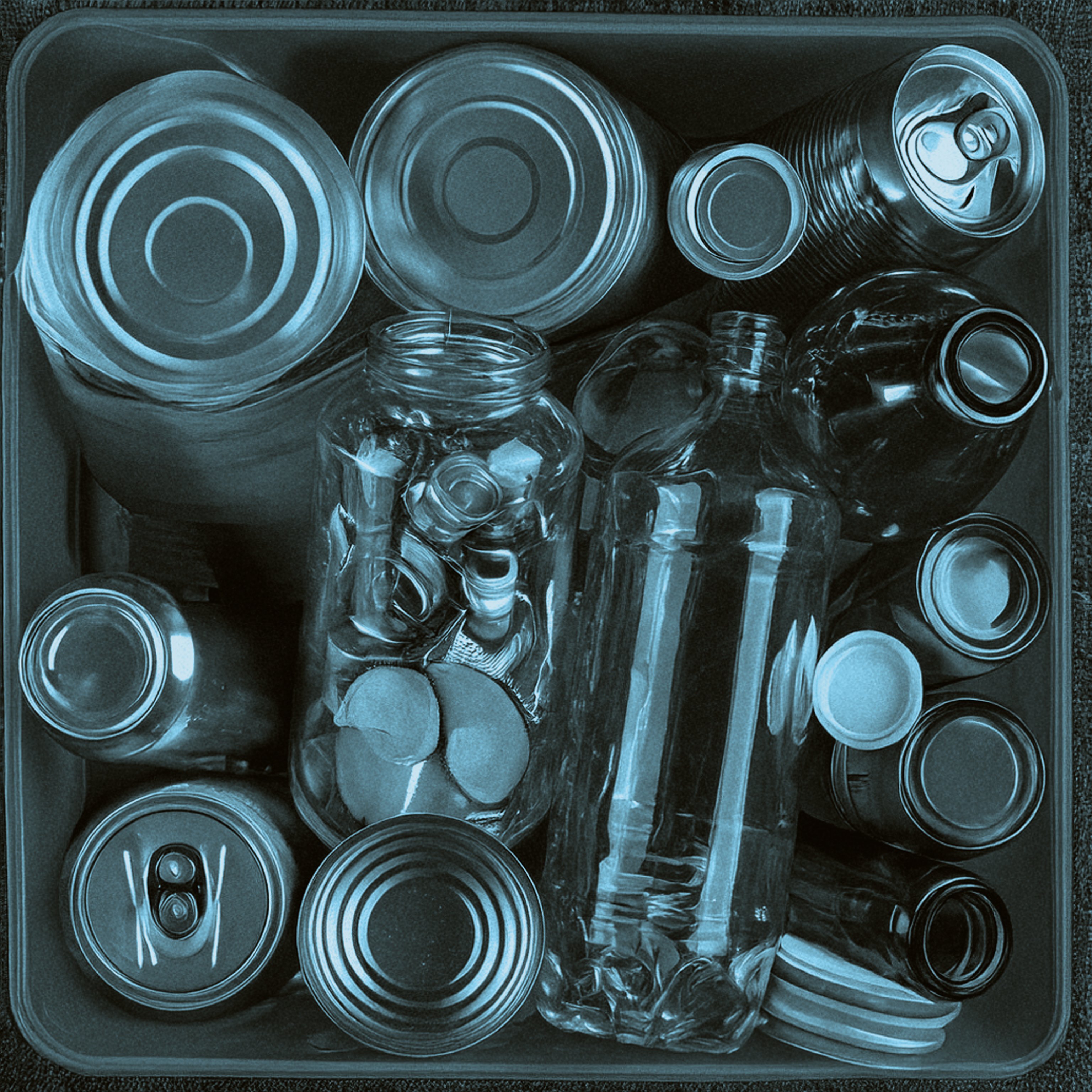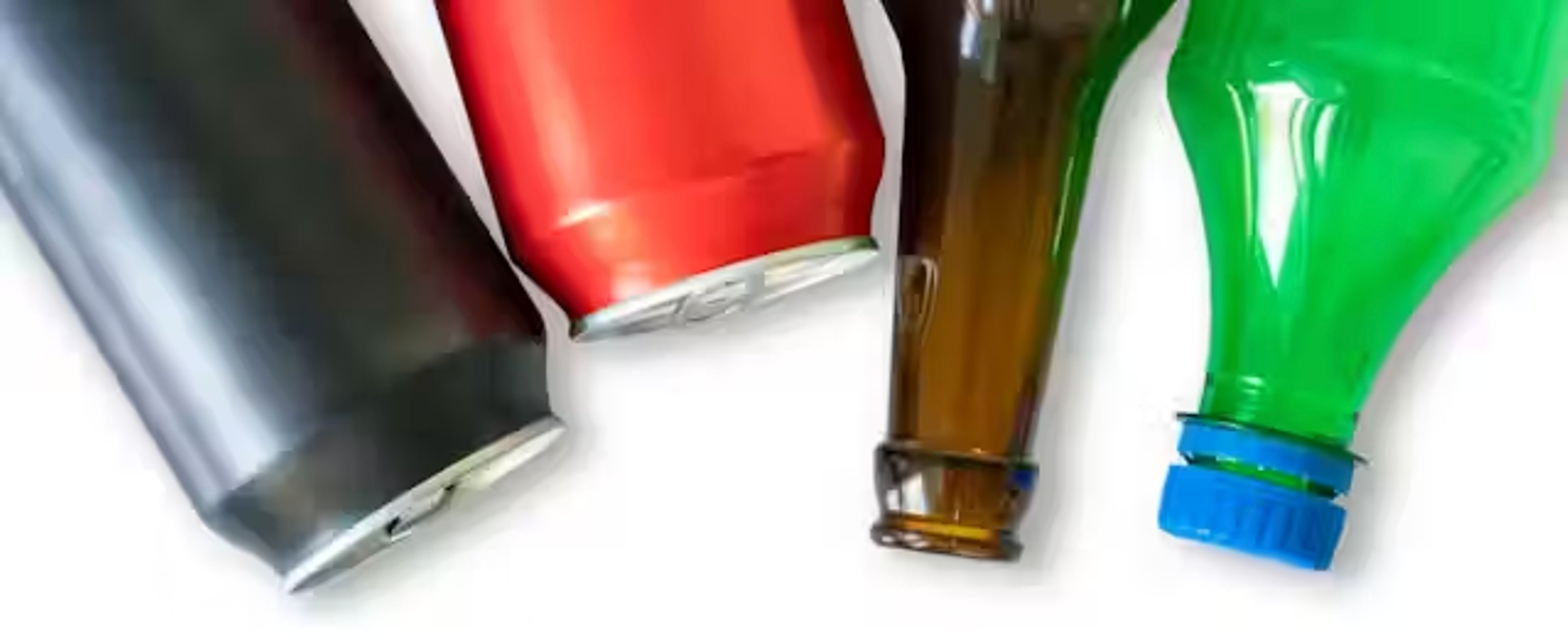Glass and Aluminium
- Good News,
- Bad News

The results are in, plastic is evil. It wreaks havoc in the ocean, clogs up the land, it might even spread disease. But oh look! Many sustainability heroes claim they have found the solution. Glass and aluminium… but is it really that simple?
PSA: Glass and Aluminium Aren’t The Solution
The results are in, plastic is evil. It wreaks havoc in the ocean, clogs up the land, it might even spread disease. But oh look! Many sustainability heroes claim they have found the solution. Glass and aluminium… but is it really that simple?

Credit: The Conversation
Does glass deserve a pass?
At first glance glass may seem like a no-brainer, it’s made from natural substances, it’s infinitely recyclable, it’s non-toxic and lasts centuries, what’s not to love? But looking deeper, glass comes with some major caveats.
For one, glass has to be made from a very specific, very high-quality type of silica sand, a type of sand only available in certain areas - one of these being our very own North Stradbroke Island in Western Australia. This little sand island knows all too well the impacts of over mining: habitat destruction, vegetation loss and the irreversible damage to Aboriginal archeological sites. But Australia isn’t the only place impacted by sand mining, along the Mekong River in Vietnam, land erosion currently puts 17.4 million people in danger of property loss and relocation; and these are just two examples, turns out glass isn’t the benign hero we were all hoping for. But wait, glass is infinitely recyclable right? Surely we could just skip mining altogether and recycle the glass we already have?
In an ideal world, all glass would be recycled, but alas we do not live in an ideal world, we live in a world where 28 billion glass items get discarded into landfills every year. Much like plastic, glass has to be sorted before the recycling process can begin, it can therefore be cheaper and easier for companies to landfill glass rather than recycle it. So while all this glass is being wasted, the world must continue to rely on sand mining to feed its insatiable hunger for new products.
But arguably the biggest issue with glass isn’t its indirect effect through mining, but its very large, very damaging, carbon footprint. When glass is recycled, it must first get crushed and melted, requiring temperatures of 1500°C, more than 7x higher than the temperatures needed to melt plastic. Recycling centres typically burn natural gases to achieve these temperatures, producing a whopping 575 kg of CO2 for every tonne of recycled glass. By these estimates, typical glass recycling has a larger carbon footprint than plastic recycling!
However, the keyword here is typically; there are indeed alternatives to burning natural gases for glass recycling. The company FEVE has created a glass-melting electric furnace, fuelled solely by renewable energy. Using their technology, glass recycling could be made near enough carbon-free. So with this in mind, wouldn’t glass be an ideal replacement for plastic?

Glass must be crushed before it can be melted and recycled. Credit: The Waste Connect
While glass is a fantastic alternative in some areas, it simply cannot fulfil all the functions of plastic. It breaks more easily, it weighs more, it’s less versatile, and the recycling process (as it is now) is a huge sustainability issue; unfortunately glass isn’t the solution to the plastic crisis. But let’s not abandon hope just yet… What about our next candidate: aluminium?
Is aluminium the answer?
Being the most widely recycled material on Earth, aluminium appears to be a pretty good substitute for plastic. It’s versatile, fire resistant, strong, it can be used in tiny electrical equipment and even architectural structures. It’s lightweight, conducts heat well and is non-reactive, making it perfect for kitchen appliances and food storage. And the big bonus, aluminium can be recycled infinitely, without sacrificing its quality, estimates even suggest that 75% of all aluminium ever made is still being used to this day! So what’s the problem?
Aluminium recycling is yet another casualty of broken infrastructure. If all aluminium were recycled, the industry’s carbon emissions could be cut by 95%. However, this isn’t the reality. Worldwide figures are hard to come by but in the US, it’s estimated that only 50% of aluminium cans are actually recycled, the rest goes straight to landfill where it takes centuries to degrade. Even if all aluminium were to be recycled, products such as cans would still need to contain around 26% virgin aluminium. Whichever way you look at it, the aluminium industry is far from circular, year upon year, virgin aluminium is being demanded at an ever increasing rate.
Which brings us to aluminium’s ultimate downfall: its carbon footprint, sound familiar? Just like glass, aluminium production releases more carbon than plastic production - around double the amount to be exact! In 2022, aluminium production alone contributed to 3% of the world’s direct CO2 emissions. So is aluminium a more eco-friendly alternative to plastic? No, no it isn’t.
Think Carbon
A carbon footprint is a measure of the greenhouse gases (such as carbon dioxide and methane) that are directly or indirectly emitted as a result of any given activity. Increasing atmospheric greenhouse gas concentrations is thought to be the route cause of climate change. Just as the glass of a greenhouse traps heat, greenhouse gas stops heat escaping the Earth’s atmosphere, resulting in a heating effect.
By now many of us will be aware of the costs associated with global warming. The sea level rises and desertification, disease and extinction, it isn’t a pretty picture. So in 2016, 196 countries came together to do something about it, queue the Paris Agreement. This international treaty set out to limit global warming to 1.5°C by the end of the century, and one of the best ways it recommends doing this, is to achieve global carbon-neutrality (whereby greenhouse gas emissions are equal to the greenhouse gas levels that trees, soil and oceans can absorb naturally). With this in mind, all industries, including glass, aluminium and plastic, should now be working towards becoming carbon-neutral.
Plastic could be fantastic
The thing is, plastic is a lot of things but it isn’t useless; it’s corrosion resistant, largely non-toxic (compared to other materials), durable, non-reactive, has a high strength-to-weight ratio, a great thermal and electrical insulator, (can be) fire resistant, flexible, stiff, tough, the list goes on. Because plastic is so versatile it can be used in everything from food storage, to medical equipment, furniture to clothing. It’s a tough act to beat, it’s no wonder we haven’t been able to find an adequate successor.

Plastic is incredibly versatile. Credit: The Hill
Currently all three options: glass, aluminium and plastic, require the need to melt down and remould in order to recycle. All three materials are energy intensive, fossil fuel dependent, remain in the environment for centuries, and churn out millions of tonnes of carbon into the atmosphere. So no, glass and aluminium aren’t the solution to the plastic crisis; the solution… is plastic itself.
Samsara Eco has found a way to make plastic recycling completely eco-friendly, yes you read that right, eco-friendly plastic! Instead of using the same inefficient, environmentally damaging and, let’s face it, ineffective traditional recycling methods, Samsara Eco’s plastic eating enzymes negate the need to heat and melt down plastic altogether. Instead, the enzymes themselves break plastic back down into its original building blocks. Not only does this process use 83% less energy, it restores plastic back into its purest, highest-quality form, from which it can be recycled into just about anything, no need for virgin plastic at all. But wait, that isn’t even the best part. Samsara Eco’s enzyme recycling is completely carbon neutral! Turns out plastic never needed a replacement; it just needed a better recycling strategy.
But there is one final piece to the plastic puzzle: humans’ attitude towards single-use items. It’s estimated that around half of the plastic produced today is single-use, meaning that out of the 350 million metric tonnes of plastic that is produced every year, 175 million tonnes is thrown away almost instantly. It’s a similar story for glass and aluminium. It’s not the materials themselves that are bad, it’s the way we’re using and disposing of them that is. It’s time for humanity to take responsibility for our single-use compulsion, and start putting the materials we already have to good use; bring on the recycling revolution.
Want to be part of the change? Read our top tips for changing your plastic habits here.





